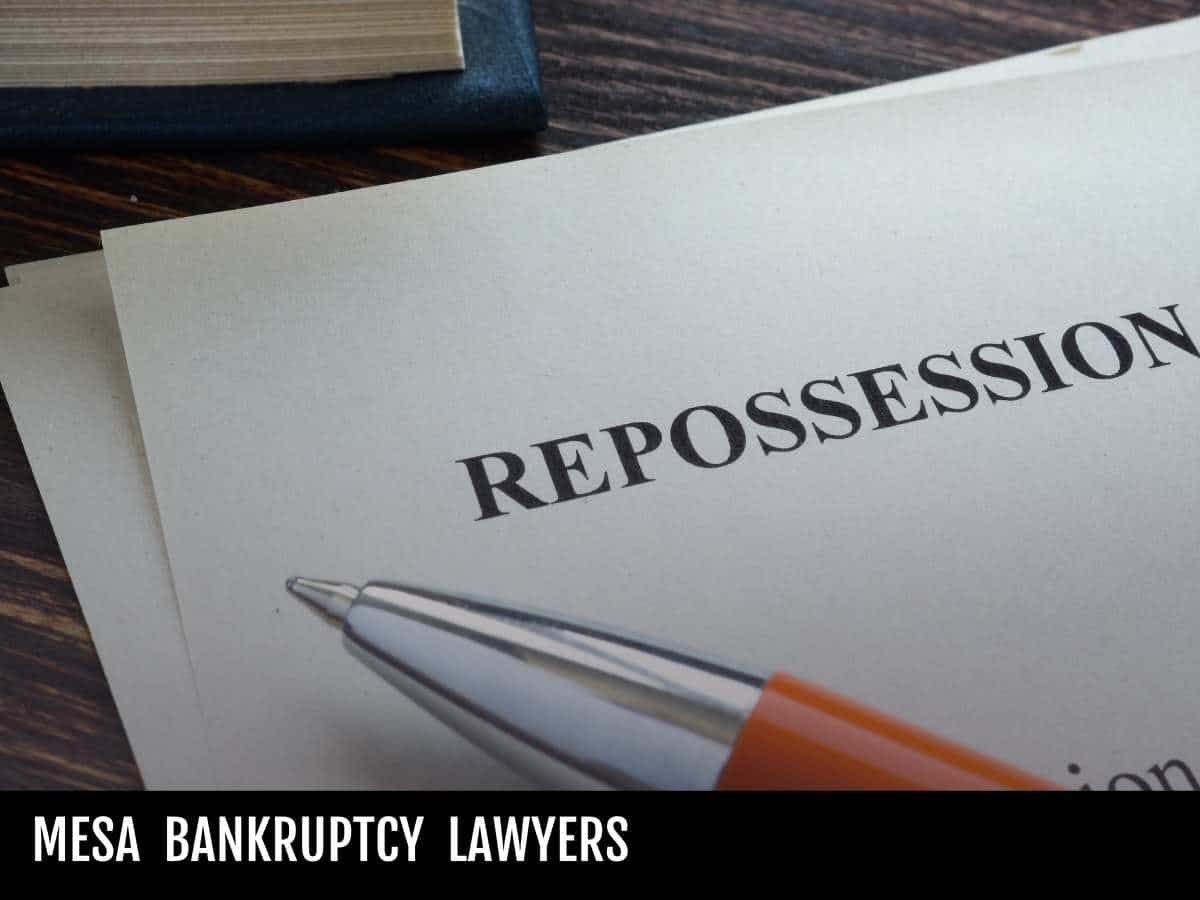How Can Bankruptcy Help You After a Vehicle Repossession
Our Chapter 7 bankruptcy attorneys and Chapter 13 bankruptcy attorneys take a look at repossession in Arizona. We also look at how a bankruptcy may be able to assist you when dealing with a repossession of a vehicle. Time is of the essence. Contact an experienced Arizona bankruptcy attorney right away. It may not be too late to save your vehicle from repossession.
After missing too many payments on your auto loan, you should be concerned about your lender repossessing your vehicle. This is a way for your creditor to recoup on an unpaid loan, selling your car at auction, likely for less than its full value. A repossession will have several types of negative effects on your life. First of all, you will need to figure out how you will get to work, school, and the rest of your responsibilities without your vehicle. You may have a co-signer on your loan who will now be liable for the balance of your loan. A repossession will also damage your credit, making it harder for you to get a replacement vehicle. Depending on your specific situation, bankruptcy may be able to help you after a vehicle repossession has already occurred.

You May Still Have a Balance On Your Auto Loan
It may seem counterintuitive that you would still owe your loan if your lender takes back the vehicle, but this is common in repossessions and is referred to as a repossession deficiency. Whether you have a repossession deficiency will depend on the balance of your loan at the time of the repossession (as well as any additional charges or legal fees for the repossession), and the amount your car sells for at auction. If you still owe money on the vehicle after the sale, your lender will file a lawsuit to collect the balance. If you have a co-signer and are unable to pay the deficiency balance, your co-signer will be responsible for the repossession deficiency. Either way, the creditor will keep looking for ways to collect the deficiency judgment eventually. Oftentimes, your creditors will use a judgment to obtain a garnishment on your wages. This judgment is an unsecured debt that can be discharged in an Arizona Chapter 7 bankruptcy. Depending on your disposable monthly income, it can be paid or discharged in a Chapter 13 bankruptcy payment plan.
Is It Possible To Get My Repossessed Car Back With Bankruptcy?
Depending on when your car was repossessed, you may be able to use bankruptcy to get it back- but not Chapter 7. Instead, you will need to file Chapter 13 bankruptcy within 10 days of your vehicle being repossessed. Your lender will be legally required to wait that 10 days to sell your car at auction. Once the car has been sold, a bankruptcy filing can’t do anything to get it back.
Chapter 13 bankruptcy can be complex before adding a recent repossession to overturn as a complicating factor. Chapter 13 bankruptcy is a reorganization payment plan meant to help those with steady income and struggles with debt. It is often used by people who are facing an imminent repossession or foreclosure because it provides the opportunity to catch up on payments and save the asset in the long run. A Mesa Chapter 13 bankruptcy payment plan lasts 3 years for someone whose income falls below the state median income, and 5 years for someone who makes more than that amount. Debts will be paid in order of four categories: legal fees, secured debts, unsecured priority debts, and unsecured nonpriority debts. The vehicle in question will be in the second category- it is a secured debt because the vehicle is collateral for the loan. To keep a secured asset in Chapter 13 bankruptcy, you generally must pay the full balance of your loan in your payment plan. However, there is an exception for home mortgages. The debtor can typically pay their usual monthly mortgage into their plan if they are current on payments.
Unsecured priority debts must also be paid in full in your plan. The last category, unsecured nonpriority debts, are those typically dischargeable in Chapter 7 bankruptcy and will only be paid to the extent that you can afford in a Chapter 13 payment plan. Chapter 13 can be especially useful in a repossession situation because your past-due payments will be spread out over the course of 3-5 years. The amount you pay for ongoing payments could be reduced or increased based on your balance and current loan terms.
When you file Chapter 13 bankruptcy to get back a repossessed vehicle, you will also deal with your other debts and gain protection from your other creditors. Once your petition is filed, the Automatic Stay goes into effect. Not only does the Automatic Stay stop vehicle repossessions, but home foreclosures, bank levies, wage garnishments, utility shutoffs, lawsuits, and more. Any of your creditors that wish to proceed with these actions during your bankruptcy must petition the court for relief from the Automatic Stay. With limited exceptions, the Automatic Stay will remain in place until your payment plan is completed or your case is dismissed.
Emergency Bankruptcy- The Faster Way To Get Filed
Whether you’re hiding from the repo man or your car was just repossessed, you’ll need to be filed quickly if you want the Automatic Stay to protect your vehicle. A bankruptcy petition is usually 50-70 pages long, requires dozens of documents, and can take far longer than the 10 days you have to get a vehicle back after a repossession. You may find it useful to first file a skeleton petition, also known as an emergency bankruptcy filing.
When you file a skeleton petition, the list of documents you will need is far shorter than when you prepare your full petition. Besides some basic address and contact information, your attorney will only need six months’ worth of pay stubs and to take your online credit counseling course. The Automatic Stay will go into place when the skeleton petition is filed, which can get back your vehicle if you filed Chapter 13 within 10 days of the repossession. You will have two weeks to submit the rest of your bankruptcy petition.
Do I Need a Bankruptcy Attorney?
The success rate for attorney-represented bankruptcy filers is always higher than for self-represented bankruptcy filers. Those in a Chapter 7 bankruptcy fare better, but it’s almost impossible to get a Chapter 13 bankruptcy discharged without attorney representation. When you add in getting your vehicle back after a repossession to your case, and possibly an emergency filing, it’s highly recommended that you seek out an experienced Tucson bankruptcy attorney.
What exactly will a bankruptcy attorney do that makes your case so much more likely to be successful? First, you will discuss your situation in detail during a consultation. Your attorney will spot issues that could arise in your case and help you strategize your filing. Once you retain, your experienced bankruptcy attorney will take all creditor calls and assist you in gathering documents for your petition. Your attorney will prepare your petition, review and sign it with you, and file it in court for you. Your attorney will represent you at all hearings, address issues with the trustee and creditors, and keep you updated throughout the process. But you may be wondering how you could possibly afford a bankruptcy attorney retainer after a vehicle repossession. Also, the good news is that you can work your attorney’s fees for a Chapter 13 bankruptcy into your payment plan. To learn more, call or use our online form to schedule your free consultation with one of our dedicated Mesa bankruptcy attorneys today!
1731 West Baseline Rd., Suite #101
Mesa, AZ 85202
Office: (480) 448-9800






